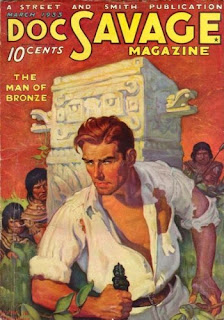On the evening of October 3, 1849, a magazine editor and physician in Baltimore Maryland received this hastily written letter.
Baltimore City, Oct. 3, 1849
Dear Sir,
There is a gentleman, rather the worse for wear, at Ryan's 4th ward polls, who goes under the cognomen of Edgar A. Poe, and who appears in great distress, & he says he is acquainted with you, he is in need of immediate assistance.
Yours, in haste,
JOS. W. WALKER
To Dr. J.E. Snodgrass.
Snodgrass, along with one of Poe's relatives, arranged to have a carriage take the writer to Washington College Hospital. Poe was obviously ill and in distress. Some thought he was drunk. Doctors could not determine his illness. Four days later, he was dead.
The true cause of death for the greatest writer of the 19th century has never been determined. But almost as great a mystery surrounds his appearance in Baltimore. He had left Richmond, Virginia a week earlier, destined for Philadelphia. Poe never arrived. He had been missing for several days when discovered outside Gunner Hall, a public tavern, by Joseph Walker, the man who alerted J E Snodgrass.
Friends and observers who tried to piece together where Poe had been for several days didn't get far, but several strange facts did emerge. Poe left Richmond wearing an expensive wool suit, but upon arriving at the hospital, he was wearing someone else's clothes. They were filthy and didn't fit him. His attending physician, Dr. Moran, described Poe as wearing "a stained, faded, old bombazine coat, pantaloons of a similar character, a pair of worn-out shoes run down at the heels, and an old straw hat." Very strange attire for a man who had a reputation for dressing well.
Though Snodgrass thought Poe was drunk after going on a wild bender, Moran was convinced his patient was sober and suffering from severe head trauma. Moran also stated that Poe had repeatedly called out the name "Reynolds" before he died. Subsequent attempts to find this mystery man were fruitless.
One witness claimed Poe had left Richmond with a large sum of cash (over 1,000 dollars) for magazine subscriptions. But he was penniless upon discovery in Baltimore, leading some to theorize that Poe had been mugged and his clothes stolen by ruffians. Other theories include mercury poisoning, a brain tumor, or rabies. One credible theory suggests Poe was kidnapped, disguised, gotten drunk and forced to vote at several polls for a favored candidate (election fraud was common in the mid 19th century and voters were often given alcohol as a reward for their votes). But the truth still eludes us.
"Maybe it’s fitting that since he invented the detective story, he left us with a real-life mystery."
- Chris Semtner, curator of the
Poe Museum in Richmond, Virginia
For a look at Poe's Baltimore, including the spot where he was discovered by Walker, click on the blue balloon links in the map below.
 It's the birthday of poet and mystery writer Linda Rodriguez, born October 24th in Fowler, Kansas. Her first novel, Every Last Secret, won the Malice Domestic Award for Best First Traditional Mystery Novel in 2011.
It's the birthday of poet and mystery writer Linda Rodriguez, born October 24th in Fowler, Kansas. Her first novel, Every Last Secret, won the Malice Domestic Award for Best First Traditional Mystery Novel in 2011. Linda has published two more novels in this highly acclaimed series, including Every Broken Trust and Every Hidden Fear.
Linda has published two more novels in this highly acclaimed series, including Every Broken Trust and Every Hidden Fear.

















